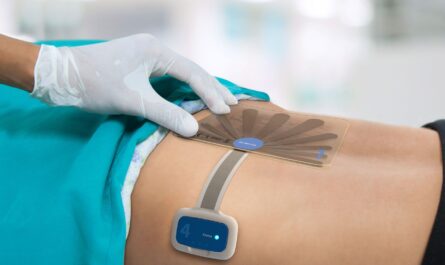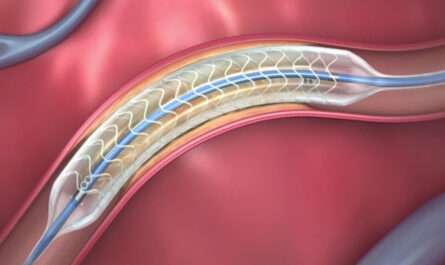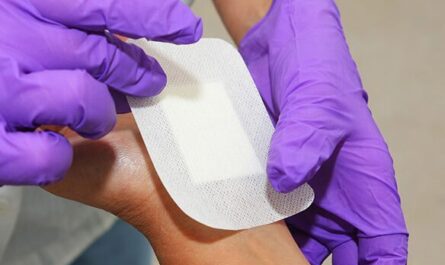Near infrared (NIR) light based medical imaging is an innovative non-invasive technique used for clinical applications like disease detection, diagnosis and tissue characterization. It utilizes light in the near-infrared spectral range, between 700–1000 nm, which can penetrate deeply into tissues. NIR light based techniques like fluorescence imaging are gaining popularity in biomedical research and patient care due to their functional contrast, high sensitivity and portability.
Principles of Near Infrared Imaging
NIR imaging relies on the interaction of NIR light with biological tissues. Hemoglobin, water and lipids are the primary absorbers of NIR light in the body. Additionally, exogenous contrast agents that strongly absorb or fluoresce in the NIR region can be administered. These agents enable selective molecular and cellular imaging. When NIR light is shone on tissues, the photons travel through and interact with molecular structures. Based on the absorption, scattering and fluorescence properties differences between normal and diseased tissues, pathological regions can be visualized. State-of-the-art NIR imaging systems with highly sensitive cameras precisely capture the emitted or transmitted light signals to generate high resolution images.
Clinical Applications
Cancer Imaging
NIR fluorescence imaging has shown great promise in image-guided cancer surgery. Fluorescent tumor-targeted probes are being developed that selectively highlight regions of tumor metastasis, micrometastasis and tumor margins during surgery. This allows for more complete resection of malignant tissues and improved surgical outcomes. Researchers are also exploring NIR fluorescence molecular imaging techniques for early cancer detection and disease staging.
Cardiovascular Disease Monitoring
Near Infrared Medical Imaging spectroscopy is routinely used for non-invasive monitoring of tissue oxygen saturation and blood analytes like glucose in patients. This aids in assessment of cardiovascular function, perfusion monitoring during surgeries and intensive care. Novel NIR fluorescent probes are being investigated for molecular imaging of vulnerable atherosclerotic plaques to identify those at high risk of rupture.
Brain disease diagnosis
Portable NIR diffuse optical tomography systems allow painless, radiation-free bedside imaging of brain hemodynamics and oxygenation in patients. This finds application in the diagnosis of stroke, traumatic brain injuries, brain tumors and neurodegenerative conditions like Alzheimer’s. Researchers are developing blood-brain barrier penetrating NIR fluorescent probes for cellular and molecular imaging of brain disorders.
Advancing Near Infrared Imaging Technologies
Instrumentation Advancements
Major technology gains have been made in developing lightweight, low-cost flexible and miniaturized NIR cameras, lasers and spectrometers optimized for clinical use. Hybrid fluorescence molecular tomography devices are being designed that combine fluorescent probe specific molecular contrast with high-resolution anatomical imaging capabilities. Advancements in computational methods and modeling techniques are improving capabilities for high resolution 3D tomographic reconstruction of NIR signals.
Targeted Fluorescent Probes
Achieving disease specificity is crucial for clinical translation of NIR fluorescence molecular imaging. Researchers are engineering novel targeted probes that can delineate between healthy and diseased states at molecular and cellular levels. Activatable ‘smart’ probes are being designed that selectively light up only in presence of pathological biomarkers or enzymes. Multimodal probes combining NIR with other imaging modalities like photoacoustics, MRI or ultrasound are expanding capabilities for combined anatomical and functional imaging.
Integration with other Modalities
An emphasis is on integrating NIR imaging devices with clinical grade modalities like CT, MRI, PET and ultrasound for correlative multimodal imaging. This enables utilizing the high molecular sensitivity of NIR fluorescence imaging along with high resolution anatomical context from other modalities. Researchers are developing combined PET-NIR, MRI-guided NIR and ultrasound-guided NIR imaging systems that maximize synergies between different contrast mechanisms.
Regulatory Pathways and Clinical Translation
Major regulatory efforts are underway to translate NIR imaging techniques from preclinical research to clinical and commercial applications. Standardization of instruments, probe design, data acquisition and analysis protocols are essential to establish clinical validation and approval pathways. Multicenter clinical trials are evaluating safety and efficacy of targeted NIR fluorescent probes for cancer surgeries, vulnerable plaque detection, and other disease applications. The advancement of regulations supporting clinical translation will enable realization of the full potential of this promising non-invasive molecular imaging methodology.
*Note:
1. Source: Coherent Market Insights, Public sources, Desk research
2. We have leveraged AI tools to mine information and compile it




